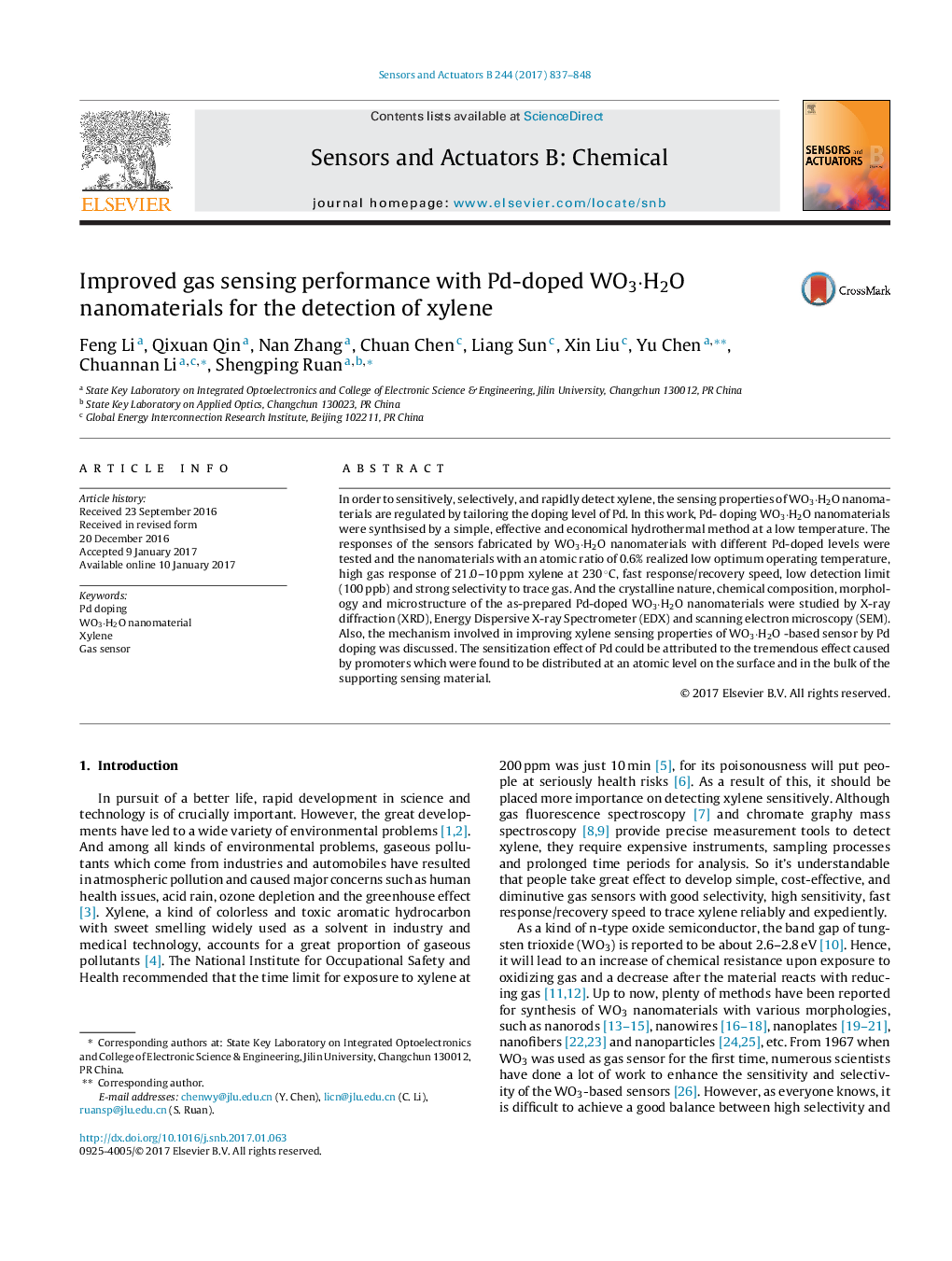| Article ID | Journal | Published Year | Pages | File Type |
|---|---|---|---|---|
| 5010050 | Sensors and Actuators B: Chemical | 2017 | 12 Pages |
Abstract
In order to sensitively, selectively, and rapidly detect xylene, the sensing properties of WO3·H2O nanomaterials are regulated by tailoring the doping level of Pd. In this work, Pd- doping WO3·H2O nanomaterials were synthsised by a simple, effective and economical hydrothermal method at a low temperature. The responses of the sensors fabricated by WO3·H2O nanomaterials with different Pd-doped levels were tested and the nanomaterials with an atomic ratio of 0.6% realized low optimum operating temperature, high gas response of 21.0-10 ppm xylene at 230 °C, fast response/recovery speed, low detection limit (100 ppb) and strong selectivity to trace gas. And the crystalline nature, chemical composition, morphology and microstructure of the as-prepared Pd-doped WO3·H2O nanomaterials were studied by X-ray diffraction (XRD), Energy Dispersive X-ray Spectrometer (EDX) and scanning electron microscopy (SEM). Also, the mechanism involved in improving xylene sensing properties of WO3·H2O -based sensor by Pd doping was discussed. The sensitization effect of Pd could be attributed to the tremendous effect caused by promoters which were found to be distributed at an atomic level on the surface and in the bulk of the supporting sensing material.
Keywords
Related Topics
Physical Sciences and Engineering
Chemistry
Analytical Chemistry
Authors
Feng Li, Qixuan Qin, Nan Zhang, Chuan Chen, Liang Sun, Xin Liu, Yu Chen, Chuannan Li, Shengping Ruan,
